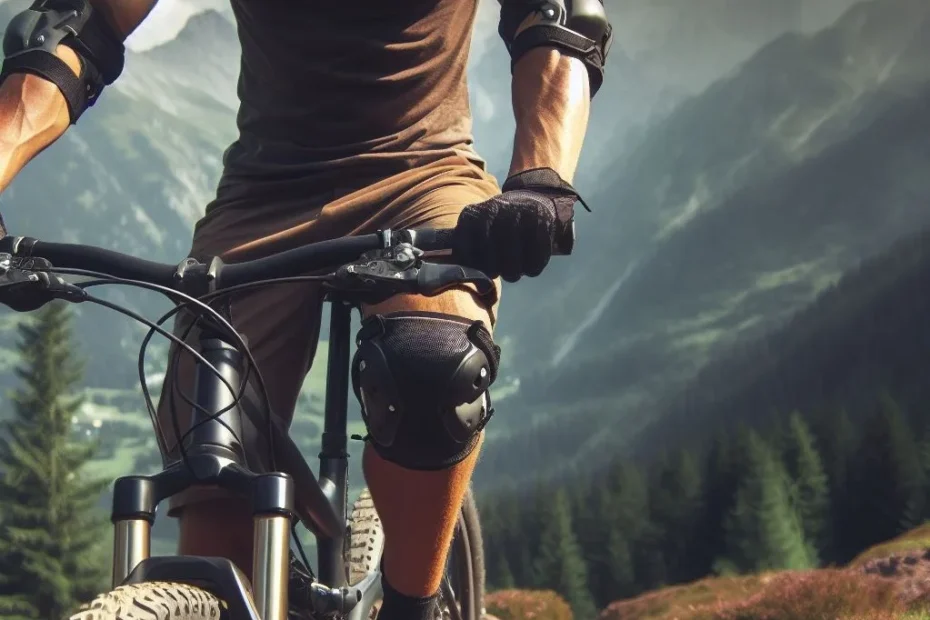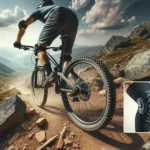Mountain biking is an exhilarating yet challenging sport that requires proper protection. One key area of protection are elbow pads which cushion your elbows and prevent injury from falls. There are many questions around which elbow pads work best and how to use them properly while riding. This FAQ aims to answer common questions about MTB elbow pads.
What are the main benefits of wearing MTB elbow pads?
Wearing appropriate mountain biking elbow pads provides critical protection for your elbows and arms. The pads cushion and shield your elbows during falls, preventing scrapes, cuts, bruising or even broken bones. Quality MTB elbow pads fit snugly so they stay in place even during crashes. They allow a full range of motion when riding so you can maneuver properly. Breathable padding keeps your arms cool and comfortable during hours of riding. Ultimately elbow pads boost confidence so you can ride harder while minimizing injury risk from spills.
When should you wear elbow pads for mountain biking?
You should wear elbow pads any time you go mountain biking. Even on smooth trails elbow pads protect you when an unexpected crash occurs. On rough terrain with rocks, roots and ledges elbow pads are absolutely essential to avoid injury. Downhill or enduro riding demands elbow pads since higher speeds and jumps make crashes more violent. Young riders should also wear pads to reduce skinned elbows as they learn. The right fit and breathable materials mean there is no downside to always wearing protection. Check out the best MTB elbow pads guide to see which option works for your riding style.
What features should you look for when choosing MTB elbow pads?
Key features to seek in MTB elbow pads include breathability, flexibility, toughness and fit. Breathable padding prevents overheating and sweat buildup during riding. Flexible materials at joints enable your full range of movement for bike handling. Durable outer shells can withstand multiple crashes without failing. A secure fit keeps pads from shifting around so they stay correctly positioned. Consider your riding style, weather conditions and budget to choose ideal elbow pads. For recommendations check the top elbow pads list. Reading elbow pad reviews and testimonials also provides insight on real world performance.
How should elbow pads fit? What adjustments can you make?
Elbow pads should fit snugly without restricting movement. Straps and velcro closures enable adjusting tightness for a secure fit. Most quality elbow pads use an ergonomic curved design that contours to your natural arm shape. Multiple sizes of pads ensure finding an ideal fit for different arm lengths and muscle mass. Pads should center properly over your elbow joint, not slide around on your arm. Breathable mesh backing often adapts better during riding. Test elbow pad movement through full range of motion when first trying them so they won’t slip or shift on the trail. Consider custom pads like LG or POC that mold exactly to your arms.
How do you put on elbow pads correctly before a ride?
Start by loosening all straps on the elbow pads prior to putting them on. Slide your hand through the opening and pull the pad several inches up your arm. The pad protects better when worn above versus below your actual elbow joint. Center the primary padding precisely over your elbow. Then tighten the upper arm strap first, ensuring no pinching under the strap. Next tighten the forearm strap snugly to prevent pad rotation but not so tight as to cut off circulation. Finally adjust the velcro wrist closure for a secure fit that still enables full range of wrist motion. Repeat pad fitting on your other elbow. Test elbow pad stability through arm twists and bike handling motions before riding.
What gear works well with elbow pads during mountain biking?
Pairing complementary protective gear with elbow pads enhances safety. Using knee pads protects the other major impact zone if you crash. A full face helmet with chin guard defends your head and face since those often hit the ground in falls too. Lightweight and breathable pads reduce overheating so consider open face helmet options. Moisture wicking padded shirts or jerseys worn under your elbow pads keep you cooler and drier as well. Finally half-finger gloves maintain finger dexterity for braking and shifting while still protecting your hands from scrapes if you fall and try to break the impact. Check recommended gear lists to see optimal pad pairings. Reading equipment reviews also provides real rider feedback on complementary gear performance.
What body armor works with elbow pads? Can you wear a pack over pads?
Many riders add an upper body armor shirt or vest over their elbow pads for extra protection during downhill riding. Hard shell armor with pads over shoulders, chest and back prevents injury if you crash onto rocks or trees. Make sure to choose a flexible armor that accommodates elbow pad arm movement so your gear works together. Breathable mesh armor paired with ventilated pads prevents overheating. For all day rides, consider a lightweight trail or enduro style pack worn over your body armor and pads. This adds storage without losing mobility or cooling from key protection. Test pack arm strap adjustment so load lifters don’t limit arm movement for bike handling. The armor recommendations guide reviews complementary body protection options by riding style.
What clothes work best with elbow pads for mountain biking?
Moisture wicking jerseys or shirts help keep you cool and dry under elbow pads during rides. Avoid cotton shirts which hold sweat. Synthetic moisture wicking fabrics paired with ventilated pad backing provides maximum airflow next to your skin. For cooler weather, wear a long sleeve jersey under the pads to cut wind yet avoid overheating. You can size up jerseys to fit over pads or get a loose style for riding flexibility. Always secure pad straps directly on your skin rather than over shirt sleeves for the best stability and positioning. Consider a jersey or jacket with elbow pad compartments if swapping outer layers. Ultimately choose flexible, breathable layers that don’t restrict movement or pad ventilation for superior comfort and protection mountain biking.
What weather conditions impact wearing MTB elbow pads? How do pads handle rain/mud/snow?
Weather significantly impacts elbow pad performance and your comfort wearing them. Cold dry conditions allow wearing lightweight well ventilated pads without overheating. But frosty temps also demand insulating layers underneath for warmth which can restrict movement. Wet mud or rain prompts choosing thicker elbow pads with protective shells that shield from moisture and trail debris getting inside. Even water resistant pads eventually soak through though so bring extra dry pads on long sloppy rides. Alternatively some riders wear rain jackets with oversize sleeves to layer over dripping pads if caught in storms. For winter snow riding insulated padded jackets worn over your elbow pads cut wind chill while the pads still cushion any crashes in deep powder through multiple layers. Test pads in likely riding conditions to determine their weather suitability based on your climate and trail conditions.
What riding disciplines need elbow pads most? Which pads work best for each style?
While useful in any mountain biking, more aggressive riding styles benefit most from quality elbow pads. Downhill demands the most elbow protection given high speeds and big jumps risking bigger crashes. Full wrap hard shell pads like G-Form Pro X3 or POC VPD Air Tectal Race provide maximum armor for chair lift and bike park riding. Enduro racers also appreciate extra coverage to push their limits during long backcountry descents and stages. All mountain or trail riders thrive with lightweight, breathable pads offering flexibility for long days pedaling like Elastic Interface Trail or 100% Accuri. Less aggressive XC or casual riders can still use minimalist pads for confidence boosting insurance against unexpected crashes on any terrain. See the style specific recommendations guide detailing ideal pads for each mountain biking discipline.
Do elbow pads work for kids or do children need specific sizing?
Quality elbow pads provide critical protection when kids are learning to mountain bike ride. Fortunately many adult sized pads adjust small enough to fit older children who can manage the velcro straps properly. Specific children’s sizes feature easy pull on sleeve designs without complex adjustments though. Kids pads also utilize softer, more flexible padding materials tailored to children’s smaller bodies and crash impacts. Fun colors and patterns keep young riders happy wearing their pads too.
Consider age, size, skill level and maturity when selecting appropriate kids elbow pads. Older, responsible pre-teens may wear adjustable adult small sized pads fine. But rambunctious young kids fare better with pull on pads without straps they can twist or tweak incorrectly. Always teach children how to put pads on properly and verify fit so pads adequately protect their growing limbs. For best kids elbow pad options, see this children’s MTB pad recommendations guide. Getting the right gear protects young riders so they feel confident challenging themselves to progress their abilities on the trail.
How do you clean dirty or smelly elbow pads best?
During mountain bike rides, elbow pads accumulate dirt, mud, sweat and bacteria in the padding which can create unpleasant odors over time. Maintain fresh smelling elbow pads by rinsing or hand washing after muddy rides. Remove loose debris then scrub pads gently with soap and water to lift out grime and sweat salts without damaging materials. Rinse thoroughly leaving pads fully open to air dry entirely before storing so no moisture breeds mildew inside.
Many high end pad materials resist retaining odors despite frequent hard use and washing. With inexpensive pads though, remove and replace worn out padding and straps as needed to eliminate stubborn smells. Storing pads loosely rather than compressed in a crammed gear bag also preserves material ventilation for faster drying and less rancid pads. Let us know if you have any other questions about mountain biking elbow pad care and cleaning after reading this introductory FAQ guide.






